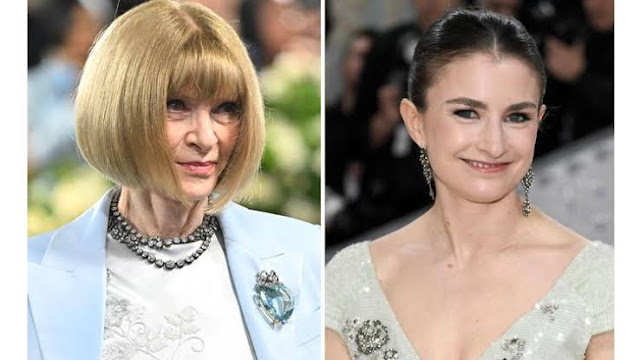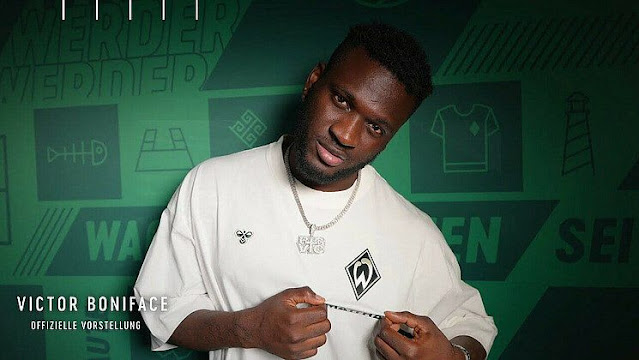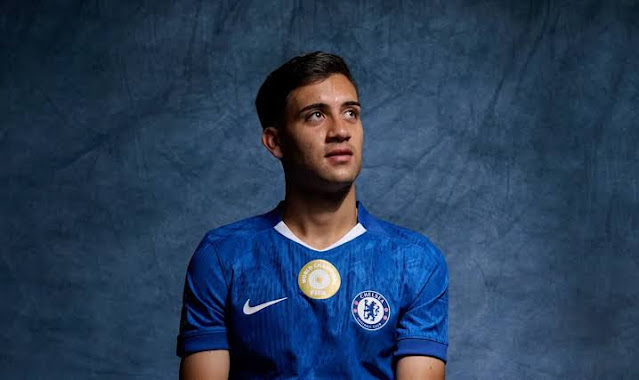On September 2, 2025, the fashion world received a seismic announcement that reverberated through the glossy corridors of high fashion and media: Anna Wintour, the formidable editor-in-chief of American Vogue, had named her successor. After 37 years at the helm of one of the most influential publications in the world, Wintour, aged 75, chose Chloe Malle, a 39-year-old journalist and current editor of Vogue.com, as the new head of editorial content for American Vogue. This decision, first reported by industry news site Puck on September 1, 2025, and officially confirmed by Vogue the following day, marks a significant turning point for the magazine, which has long been regarded as the “fashion bible.” However, the transition is not as straightforward as it seems, as Wintour is not stepping away entirely—she remains Condé Nast’s chief content officer and global editorial director of Vogue’s 28 international editions, ensuring her influence will continue to loom large over the publication.
This article delves deeply into the implications of this transition, exploring Malle’s background, her rise within Vogue, the challenges she faces in her new role, the legacy of Anna Wintour, and the evolving landscape of fashion media in the digital age. It also examines the broader context of Condé Nast’s restructuring, the dynamics of the fashion industry, and the expectations for Malle as she steps into one of the most coveted roles in publishing.
The Announcement: A New Era Begins
The announcement of Chloe Malle as the new head of editorial content for American Vogue came after months of speculation within the fashion and media industries. Wintour’s decision to step back from her role as editor-in-chief, which she announced on June 26, 2025, sent shockwaves through the industry, sparking intense debates about who could possibly fill her iconic low-heeled slingbacks. Names like Eva Chen, vice president of fashion partnerships at Meta, Nicole Phelps, global director of Vogue Runway and Vogue Business, and Sara Moonves, editor-in-chief of W magazine, were floated as potential candidates. Other contenders included Vogue’s fashion news director Mark Holgate, British Vogue’s head of editorial content Chioma Nnadi, and Vogue.com’s digital style director Leah Faye Cooper. Even more speculative names, such as Victoria Beckham and Meghan Markle, surfaced in online discussions, reflecting the high stakes and public fascination with the role.
Ultimately, Wintour’s choice of Malle was seen as both a practical and strategic decision. According to Puck’s Lauren Sherman, Wintour was looking for a journalist who could transform Vogue into a “live-action content machine” while she focused on mentoring regional editorial leaders in global markets struggling to attract advertisers and audiences. Malle, described as a “voracious, engaged journalist with an intuition for women’s changing interests,” was deemed the “path of least resistance”—a candidate who could balance Vogue’s storied history with the demands of a rapidly evolving media landscape.
Malle’s appointment is notable not only for her qualifications but also for the title she inherits. The storied “editor-in-chief” title, which Wintour held for nearly four decades, has been retired, replaced by the more modern “head of editorial content.” This change reflects broader shifts within Condé Nast, where traditional editor-in-chief roles are being restructured into global editorial director and head of editorial content positions. For example, when Radhika Jones stepped down as Vanity Fair’s editor-in-chief earlier in 2025, her role was replaced by Mark Guiducci as global editorial director. Malle’s new title signals a shift in focus toward managing both print and digital content while reporting directly to Wintour, who retains oversight of Vogue’s global operations.
In her statement, Wintour praised Malle’s ability to navigate the delicate balance between tradition and innovation. “At a moment of change both within fashion and outside it, Vogue must continue to be both the standard-bearer and the boundary-pushing leader,” Wintour said. “Chloe has proven often that she can find the balance between American Vogue’s long, singular history and its future on the front lines of the new. I am so excited to continue working with her, as her mentor but also as her student, while she leads us and our audiences where we’ve never been before.” Malle, in turn, expressed awe and gratitude for the opportunity, stating, “Fashion and media are both evolving at breakneck speed, and I am so thrilled—and awed—to be part of that. I also feel incredibly fortunate to still have Anna just down the hall as my mentor.”
Who Is Chloe Malle?
Chloe Malle, born in 1985, is a seasoned journalist with a pedigree that has drawn both admiration and scrutiny. The daughter of actress Candice Bergen, known for her Emmy-winning role in Murphy Brown and an Oscar-nominated performance in Starting Over, and the late French director Louis Malle, whose films include Elevator to the Gallows and Au Revoir, Les Enfants, Malle grew up in a world of privilege and cultural influence. Splitting her childhood between Paris and Los Angeles until her father’s death when she was 10, Malle was exposed to the intersections of art, film, and media from an early age. She has openly acknowledged her privileged background, describing herself as a “proud ‘nepo baby’” in a 2025 interview with The New York Times. “There is no question that I have 100 percent benefited from the privilege I grew up in,” she said. “It’s delusional to say otherwise. I will say, though, that it has always made me work much harder. It has been a goal for a lot of my life to prove that I’m more than Candice Bergen’s daughter or someone who grew up in Beverly Hills.”
Malle’s career trajectory reflects her determination to carve out her own path. A graduate of Brown University with a degree in comparative literature, she began her professional life as a real estate reporter for the New York Observer and freelanced for the New York Times Style section. Her entry into Vogue came in 2011, at the age of 25, when she joined as a social editor, covering weddings, parties, and what she described as “fun, fluffy things” in a 2013 interview with Into The Gloss. Malle admitted to initial hesitation about joining Vogue, as fashion was not her primary interest, and she aspired to be a writer rather than an editor. However, she was “seduced by the Vogue machine” and quickly rose through the ranks.
In 2016, Malle transitioned to a contributing editor role, and by 2023, she had become the editor of Vogue.com, overseeing the magazine’s digital output. She also co-hosts Vogue’s podcast, The Run-Through with Vogue, alongside Chioma Nnadi, head of editorial content for British Vogue. Her work has included high-profile interviews, such as a June 2025 profile of Lauren Sánchez ahead of her wedding to Amazon CEO Jeff Bezos. Malle’s ability to navigate both the traditional and digital realms of Vogue has positioned her as a versatile leader capable of addressing the challenges of modern media.
Malle’s personal style and approach to her career have also garnered attention. In her 2013 Into The Gloss interview, she revealed a preference for understated fashion, often wearing her curly hair slicked back and her shirts “buttoned all the way up” to project seriousness. She admitted to breaking a cardinal rule during her Vogue interview by wearing black, a faux pas in Wintour’s famously discerning world. Despite this, her work ethic and journalistic instincts earned her Wintour’s trust. Malle’s liberal-leaning politics, which align with Wintour’s, have also been noted, as has her admiration for Wintour’s directness. “I actually love working with Anna, because I love someone telling me exactly what needs to be done and exactly what she thinks about something,” Malle told The Independent in 2025. “There’s no indecision. There’s no ambiguity.”
Anna Wintour’s Legacy: The Titan of Fashion
To understand the significance of Malle’s appointment, one must first grapple with the monumental legacy of Anna Wintour. Since taking over as editor-in-chief of American Vogue in 1988, Wintour has transformed the magazine from a traditional fashion journal into a global cultural juggernaut. Born in London in 1949, Wintour began her career at British Vogue and Harper’s Bazaar before joining American Vogue in 1983 as creative director. Her appointment as editor-in-chief five years later marked a turning point for the magazine, which was founded in 1892 as a society journal and acquired by Condé Nast in 1909.
Under Wintour’s leadership, Vogue expanded its scope beyond high fashion and studio photography to embrace pop culture, politics, and celebrity. She was among the first to put celebrities, athletes, and politicians on the cover, a move that broadened the magazine’s appeal and cemented its status as a cultural tastemaker. Wintour’s risk-taking approach also saw the expansion of Vogue’s international editions, with 28 editions now spanning markets from Britain and France to China and India. Her influence extended beyond the pages of the magazine, as she became a fixture at New York Fashion Week, the Met Gala, and other high-profile events, often seated front row with her signature A-frame bob and oversized sunglasses.
Wintour’s tenure was not without controversy. Her stern management style, immortalized in the 2006 film The Devil Wears Prada as the inspiration for Miranda Priestly, drew criticism for its intensity. However, her supporters argue that her exacting standards elevated Vogue to unparalleled heights. As Condé Nast’s chief content officer, Wintour oversees a portfolio of brands including Vogue, Wired, Vanity Fair, GQ, Glamour, Bon Appétit, and more, with the exception of The New Yorker, where editor David Remnick retains autonomy. Her role as global editorial director of Vogue ensures that her influence will persist, even as Malle takes over day-to-day operations of the U.S. edition.
Wintour’s decision to step back from the editor-in-chief role was framed as a strategic move to focus on her global responsibilities. “Anybody in a creative field knows how essential it is never to stop growing in one’s work,” she told Vogue staff in June 2025. “When I became the editor of Vogue, I was eager to prove to all who might listen that there was a new, exciting way to imagine an American fashion magazine. Now, I find that my greatest pleasure is helping the next generation of impassioned editors storm the field with their own ideas, supported by a new, exciting view of what a major media company can be.”
The Challenges Ahead for Chloe Malle
As Malle steps into her new role, she faces a daunting set of challenges. The media landscape has changed dramatically since Wintour took the helm in 1988. Legacy publications like Vogue are grappling with declining print revenues, the rise of digital media, and the need to attract younger audiences, particularly Gen Z. Malle’s experience as editor of Vogue.com positions her well to address these challenges, but the pressure to maintain Vogue’s prestige while innovating is immense.
One of Malle’s key tasks will be to redefine Vogue’s identity in a digital-first world. She has already hinted at bold changes, including a shift away from the traditional monthly print schedule toward issues centered on specific cultural moments or themes. In an interview with The New York Times on September 2, 2025, Malle emphasized the importance of putting her own stamp on the magazine. “Whoever took on this job would not succeed if what they produced was ‘Anna lite,’” she said. “Placing my own stamp on this is going to be the most important part of this being a success. There has to be a noticeable shift that makes this mine.” Malle also expressed a desire to focus on a “more direct, smaller, healthier audience” for Vogue’s online content, suggesting a move toward niche, high-quality engagement rather than chasing broad digital reach.
Malle’s vision for Vogue includes a “childlike excitement” for fashion and culture, as noted by The New York Times. Her pitch to Condé Nast reportedly included major changes to the print product, though specifics remain under wraps. Industry observers speculate that she may lean into Vogue’s digital platforms, leveraging her experience with Vogue.com and The Run-Through podcast to create dynamic, multi-platform content. This could include more video content, interactive features, and partnerships with influencers and celebrities to appeal to younger readers.
However, Malle’s role is complicated by Wintour’s continued presence. As her direct supervisor, Wintour will retain significant influence over Vogue’s direction, creating a dynamic that Malle herself described as akin to Philippe Petit’s high-wire walk between the Twin Towers in 1974. “I know that some people who were interested in this job were sort of daunted by the idea of Anna being down the hall,” Malle told The New York Times. Her ability to assert her vision while working under Wintour’s shadow will be a critical test of her leadership.
The Broader Context: Condé Nast and the Fashion Industry
Malle’s appointment comes at a time of significant upheaval in the media and fashion industries. Condé Nast, Vogue’s parent company, has been navigating financial challenges, including declining ad revenues and the need to adapt to digital platforms. The retirement of the editor-in-chief title across Condé Nast publications reflects a broader restructuring, with global editorial directors overseeing multiple markets and heads of editorial content managing day-to-day operations. This shift allows Wintour to focus on supporting Condé Nast’s global markets, many of which are struggling to maintain relevance in the face of local competition and changing consumer habits.
The fashion industry itself is undergoing a transformation, driven by sustainability concerns, the rise of streetwear, and the influence of social media platforms like Instagram and TikTok. Vogue has long been a gatekeeper of high fashion, but its relevance depends on its ability to adapt to these shifts. Malle’s liberal-leaning politics and her connection to younger audiences through Vogue.com and The Run-Through podcast may help bridge the gap between Vogue’s traditional readership and Gen Z consumers, who prioritize authenticity and inclusivity.
New York Fashion Week, scheduled to begin on September 11, 2025, will be an early test of Malle’s leadership. As the new head of editorial content, she will play a key role in shaping Vogue’s coverage of the event, which remains a cornerstone of the fashion calendar. Her ability to balance Vogue’s legacy of glamour with a fresh, modern perspective will be closely watched by industry insiders and readers alike.
The Future of Vogue Under Chloe Malle
As Chloe Malle steps into her role as head of editorial content, the fashion world is watching with bated breath. Her appointment represents a generational shift, with a millennial now at the helm of a publication that has shaped cultural narratives for over a century. Malle’s background as a journalist, her digital expertise, and her willingness to embrace change position her as a strong candidate to lead Vogue into the future. However, the challenges of navigating a competitive media landscape, asserting her authority under Wintour’s oversight, and maintaining Vogue’s status as a cultural arbiter are formidable.
Malle’s vision for Vogue is likely to emphasize innovation while honoring the magazine’s legacy. Her proposed shift toward thematic print issues and a more focused digital strategy suggests a willingness to take risks, much like Wintour did when she revolutionized Vogue in the 1980s. At the same time, her acknowledgment of Wintour as a mentor indicates a respect for the magazine’s history and the woman who made it a global powerhouse.
The fashion and media industries are at a crossroads, and Malle’s leadership will be a defining factor in Vogue’s ability to remain relevant. Whether she can carve out a distinct identity for the magazine while working under Wintour’s formidable shadow remains to be seen. For now, the appointment of Chloe Malle signals a new chapter for American Vogue—one that promises to blend tradition with transformation in the ever-evolving world of fashion.






